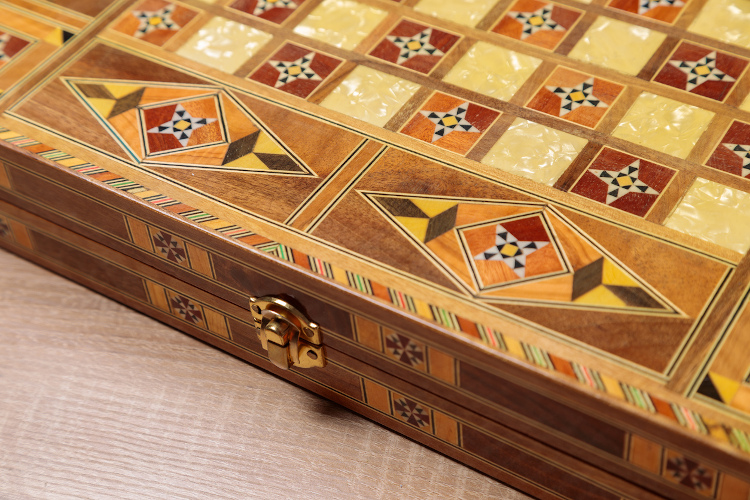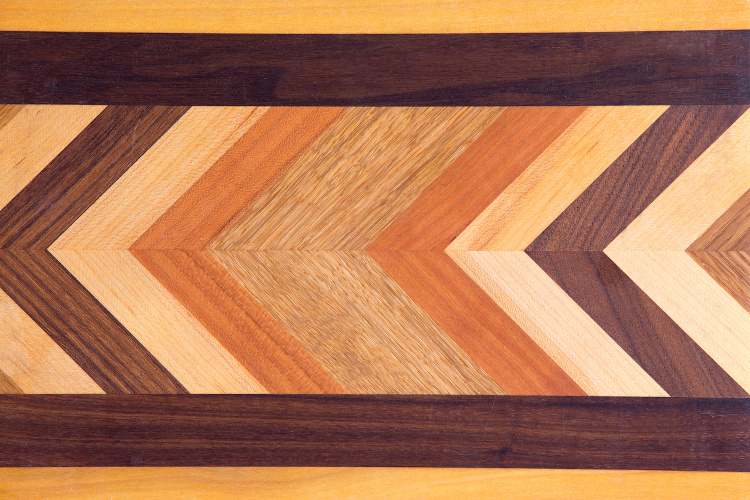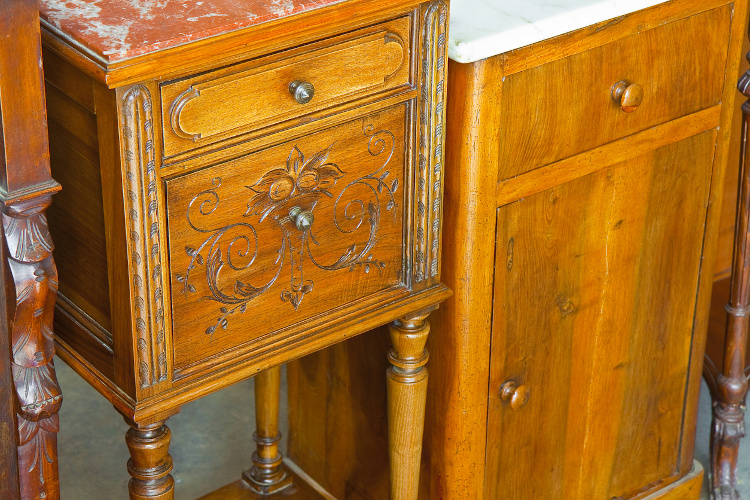A Rich History
The craft of marquetry (decorating boxes, furniture and even musical instrument such as banjos with the application of wood veneers) is a timeless art practised by craft folk up and down the land. It has origins in Ancient Egypt and takes inspiration from 16th century Florence and Naples marble. Exported to 17th century France, it made it’s way into Royal furniture production, and was introduced into England by William of Orange.
Despite its rich history, it is fair to say that the art is somewhat shrouded in mystery. If you have ever looked for craft ideas online, it is unlikely you will have found any Marquetry examples. It is a craft art that has somewhat been left behind and is often missed entirely when bloggers are looking to provide inspiration for others.
A quick look at the Marquetry Society website demonstrates this perfectly. On the face of it, it is a craft that has been left behind by the modern age…and yet if you look closer, there is a beauty and depth that captivates.
There are some though that have penetrated the mystery and made it all the way to buying a starter kit. And why wouldn’t they – a quick look on ETSY is proof enough that professional marquetry is handsomely rewarded for those that develop the skills to earn a living from the craft.
What Equipment Is Needed to Get Started in Marquetry?
A central component in the Marquetry toolkit is the craft knife. Although new techniques have emerged to speed up the process for larger-scale work, essentially you will need a craft knife to practice the art at home, along with a selection of wood veneers, glue and polishes.
For a full kit list, the Marquetry Society has you covered.
Manufacturer guidance can be a great help in this respect as knives can be purchased in different duties. The duty required will generally follow the material being cut and this is a key point because there are subtle differences you may miss when buying Marquetry kits. The thicker and tougher the material, the tougher the craft knife needs to be.
Most Marquetry kits use 0.6 mm thickness veneers, but these can vary and if buying the veneers separately from the kit, you ideally need to check with the supplier what thickness you are buying and the application the veneers are intended for. Get that wrong and you risk lots of broken blades and potential injury.
Product Comparisons: The Marquetry Craft Knife
“There are many types on the market. Over a period of time find out which one suits you and your style of working. A favourite for beginners has an aluminium shaft (pencil thickness) and takes 11a size blades.” Marquetry Society Website
The above description from the Marquetry Society website is a general reference to Light Duty Craft knives used for cutting shapes from thin wood veneers. The options from our own range are as follows:
No 3 Surgical Handle & No 10A Blade:
This product is from our surgical range and is popular for thin veneers given the extra sharpness of the No.10A and 11 surgical blades it ships with. The only negative for new Marquetry starters is the requirement for manual blade changes. This isn’t for everyone and you may be more comfortable with a specific craft knife that has a traditional thumb screw or collar attachment mechanism.
Plastic Craft Tool & No 1 Blade:
This is the most popular of all the Swann-Morton Craft knives for the craft of marquetry. It ships with an easy thumbscrew for blade attachment and has three blade shape choices to choose from.
This is our equivalent product to the more widely known X-Acto No 1 knife. It comes with a choice of blade shapes and has numerous blade shapes that naturally fit the craft of Marquetry including the ACM 11 blade.
Should You Buy The Knife In The Kit Or Separately?
Getting a bundled knife is the easiest solution for the beginner and in most cases, a bundled knife will get you started. As the Marquetry Society mentions above, you can always change the craft knife once you get going and it is likely that the kit supplier has picked a suitable knife to cut the supplied veneers.
If you elect to build your kit, the veneer thickness should be checked before buying the knife.
There are various downsides to this approach but these tend to revolve around quality, fit for your hand and spares. This may not be a huge consideration to begin with and you can quickly switch to another product for under £10.
When contemplating a marquetry kit that doesn’t include a knife, it is worth messaging the seller to check the veneer thickness. You can then safely shop around for a suitable knife separately.
How Much Do Marquetry Kits Cost?
Marquetry kits that contain the necessary wood and veneers can cost as little as USD $20.00, becoming more expensive as the project increases in complexity or depending on the materials supplied. There are many options on ETSY – take a close look at the equipment list though and double-check you get the craft knife (sometimes referred to as a scalpel) included.
Where Can I Get More Help & Advice?
There are various resources where help and advice is available, such as YouTube. You may also check the guide produced by the Staffordshire Marquetry Group. It’s very thorough and references pretty much everything you need to get started.
Where Can I Learn More About Swann-Morton Products
We have a range of resources to help you choose the right knife for your craft needs:
Buyers Guide – General advice for crafters with expert tips from professional hobbyists.
Usage Guide – Guidance on suitable products based on the material being cut.
Common Questions – we have published some of the common questions we are asked from crafters around the world.
The best knife (by material) – in this article we cover some of our best options based on the material being cut.



